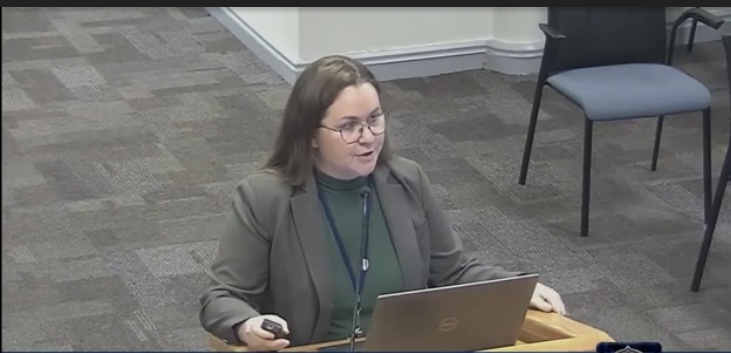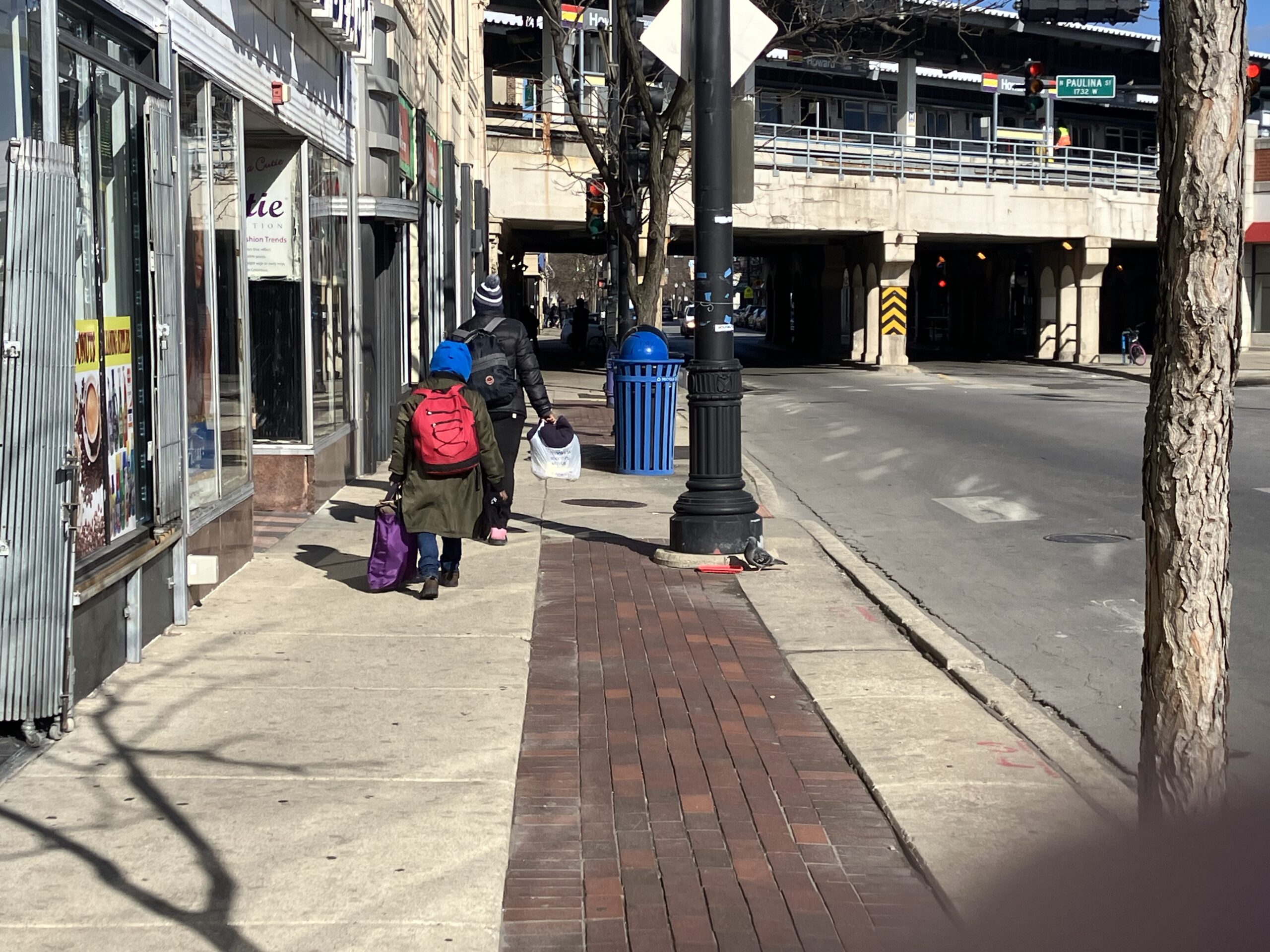By Bob Seidenberg
If Evanston is to eventually achieve its goal of carbon neutrality, the city will have to invest in projects that are renewable locally, said Cara Pratt, the city’s Sustainability and Resilience Coordinator, in an Oct. 24 report to the Evanston City Council.
To date, the city has met priorities by pursuing “low hanging fruit – the least expensive and easiest interventions,” meeting its climate action goals, she told council members.
“The deep decarbonization needed to sustain progress and to keep our trend lines intact is significantly more expensive than the projects we have invested in – like purchasing RECs – [and steps] that we have taken so far.”
The term REC stands for Renewable Energy Certificates, a tool the city has taken into account when calculating its total greenhouse gas emissions.
But the certificates have their roots in alternative energy sources purchased off-site – at wind farms in North Dakota and South Dakota.
Some impressive gains
In her report and an accompanying memo, Pratt told council members the city and its partners have made significant progress implementing the Climate Action and Resilience Plan since 2018.
According to available 2021 data, Pratt said, Evanston has reduced communitywide greenhouse gas emissions by 38.3% compared against a baseline established in 2005.
“That is 2.7% lower than the emissions reductions calculated in 2020,” she reported.
Both electric vehicle charger usage and the number of EVs registered to owners with City of Evanston addresses are showing strong upward curves.
But even with those positive trends, without the deductions the RECs enable, communitywide greenhouse gas emissions would have increased 2% from 2020 to 2021, she reported.
“The purchase of RECs has been a much-needed crutch, allowing us to make significant progress to our goals, but one day we need to walk without this crutch,” she told council members.
“In order to eventually achieve global carbon neutrality, the Evanston community and other privileged entities cannot rely on third-party renewable energy projects to meet our goals,” Pratt said, adding that the city needs to invest in projects that support the production of local renewable energy.
‘Green bragging rights’
An REC is a market-based instrument that invests consumers with the property rights to renewable electricity generation, the U.S. Environmental Protection Agency explains in a fact sheet on its site.
One REC is issued when one megawatt-hour of electricity is generated and delivered to the electricity grid from a renewable energy resource, the site explains.
RECs can be used as a green power procurement strategy by electricity consumers to meet several objectives, such as reducing the cost of their renewable electricity use and/or substantiating renewable electricity use and claims of carbon-footprint reduction, the EPA info sheet says.
At a July 14 meeting of the city’s Environment Board, Pratt said she sometimes refers to the tool as “green bragging rights.”
The city purchases RECs on behalf of residents through its community-choice aggregation program, providing participating residents with 100% renewable energy.
In April 2021, the city launched its second iteration of the program with a new vendor, MC Squared Energy Services, which draws renewable energy from wind farms in North Dakota and South Dakota, Pratt said.
The new agreement awarded the city a $500,000 civic contribution grant annually.
“When the contract with MC2 was awarded, staff recommended that a portion of the civic contribution grant go toward purchasing renewable energy certificates (RECs) to reflect the City’s ambitious energy and climate goals,” Pratt said in an Aug. 8 memo to the council’s Administration & Public Works Committee, “and to remain true to the spirit of the aggregation program, which has always purchased RECs on behalf of the enrolled accounts.”
Pratt said staff subsequently discussed the Community Choice Aggregation program and the history of purchasing RECs at the Utilities Commission meeting on July 8, as well as at the Environmental Board meeting on July 14, looking to receive feedback and direction on the future purchase of RECs.
“The general consensus at those meetings was to purchase RECs on behalf of the accounts enrolled in the Community Choice Aggregation Program this year,” she reported, “but to consider other alternative uses of the civic contribution grant in the future,” uses that would increase the production renewable energy locally.
Questions about using RECs
At the July 14 Environment Board meeting, Pratt polled members on whether the city should continue to purchase RECs on behalf of residents through the community-choice aggregation program.
Several indicated they still had questions about RECs.
Board member Jerri Garl asked about the “downside of projecting your greenness by purchasing RECs versus directly producing energy,” according to the audio recording of the meeting.
Board member Wendy Pollock spoke in support of “more of a solar and wind industry here or at a place that isn’t going to destroy farmland.”
Board member Kimberly Marion Suiseeya also spoke in support of some renewable source locally. She suggested that if the city were to draw on a mixture of RECs and a renewal energy source at home, perhaps put to use at a building such as the new Robert Crown Community Center, the city would then have “a more nuanced accounting” of its actual emissions reductions.




